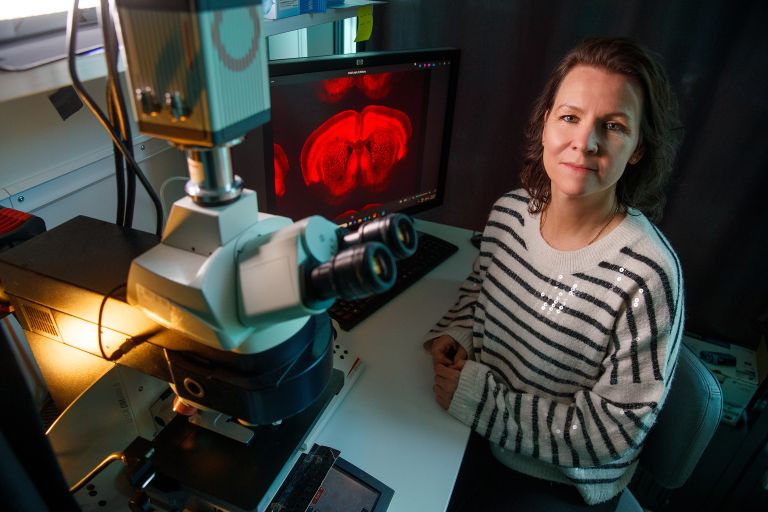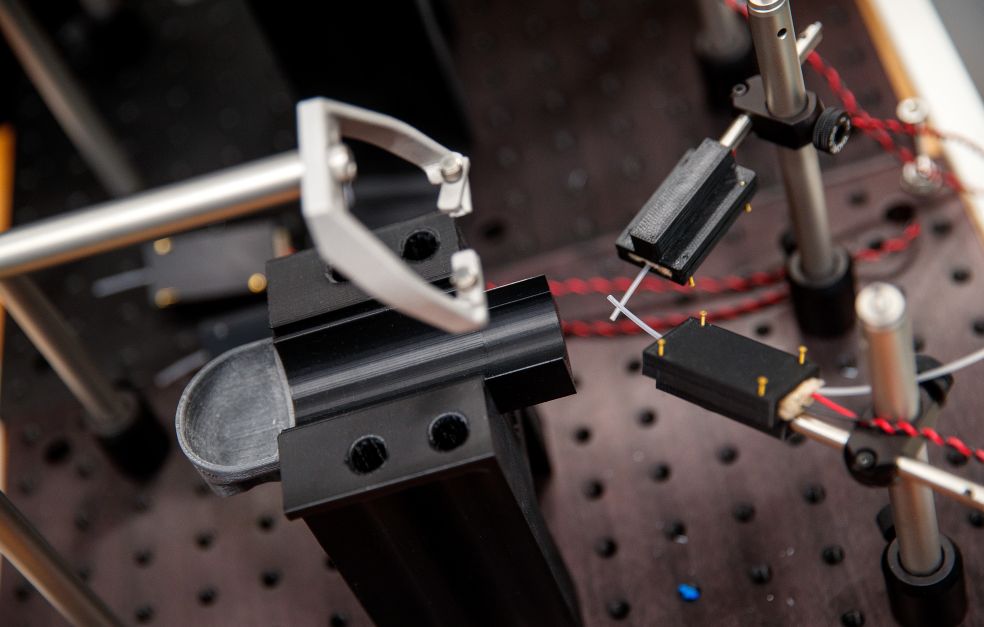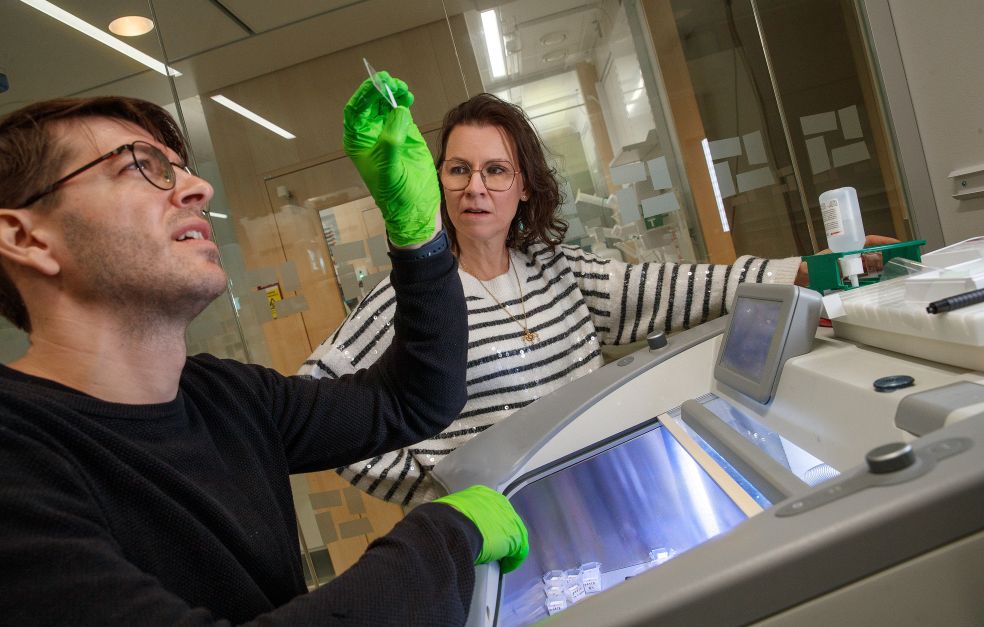Research on the structure of the brain has made great strides in recent years. However, Marie Carlén believes a new approach is needed to move forward. She is developing entirely new concepts and methods to analyze the brain’s electrical activity in the hope of elevating our understanding of cognition to a new level.
Marie Carlén
Professor of Neuronal Networks
Wallenberg Scholar
Institution:
Karolinska Institutet
Research field:
Studying networks and activity in the prefrontal cortex to establish the biological basis of cognition
Carlén is a professor of neuronal networks at Karolinska Institutet and a Wallenberg Scholar. Her research team is exploring the functional role of the brain’s frontal region, known as the prefrontal cortex, in our higher mental abilities such as attention, working memory, and problem-solving.
“I’m interested in this part of the brain because it integrates information generated and stored in the brain with information from the environment that reach the brain through our senses.”
It is clear that the prefrontal cortex plays a crucial role in complex mental capabilities. Injuries or interventions affecting this part of the brain often impact decision-making, personality, and cognitive functions.
In recent years, researchers have mapped the brain in great detail, identifying genetic types of neurons and their spatial distribution in brain tissue. This has provided vital knowledge about the structure of the brain but still reveals little about how it functions.
“Nowadays it is fairly straightforward to use optogenetics in mice to manipulate the activity of selected neurons in the prefrontal cortex, or elsewhere, and observe how this changes the animal’s behavior,” says Carlén.
But the question is what the results genuinely reveal about how this part of the brain functions. Carlén aims to establish how the networks of neurons in the prefrontal cortex actually perform neuronal computations that are integral to cognitive processes.
New maps of brain activity
The brain is an electrical machine in which neurons interchange a myriad of ultra-fast electrical pulses – and it is precisely this traffic flow that needs to be mapped and understood.
“I want to characterize the electrical activity at the level of individual neurons and create maps of activity patterns across the prefrontal cortex. Most importantly, I want to understand the biological and organizational principles governing these patterns and decipher how the patterns underly cognitive processes, such as attention, working memory, planning, or decision-making,” explains Carlén.
In line with this, much of her research aims to establish which electrical activity reflects and supports cognitive processes.
Carlén and her colleagues are using ultra-thin electrodes capable of recording the electrical activity of thousands of individual neurons.
At present, researchers can record and measure neuronal activity in mice more effectively than in other animals. Sweden also has clear ethical guidelines on the use of mice in research. Elsewhere, researchers study brain activity in primates and, in rare cases, gather data from humans, generally from patients undergoing treatment.
“We don’t need to perform all the experiments ourselves – my research also benefits greatly from data gathered by other researchers.”
The discoveries on brain activity in mice pave the way for comparative studies on other species. Ultimately, Carlén wishes to clarify which features are common to mammalian brains and which are unique to certain species, for example humans.
Cognition signature
The researchers are training mice to perform tasks requiring cognition, such as detecting and reporting the presence of a specific sound. The mice can report by spinning a wheel with their front paws or by licking a nozzle delivering water.
We want to define the brain in a new way. Curiosity-driven research often leads to really major discoveries.
“By simultaneously recording electrical activity in the prefrontal cortex, we can establish how the activity changes during the learning of a task and ‘see’ learning in the neuronal activity even before it manifests in the animal’s behavior,” says Carlén.
Part of the research aims to establish the relationship between activity patterns and different types of neurons.
New view of the brain
Historically, researchers have viewed the brain as holding distinct areas with specific functions. But this is an oversimplified view that needs updating. Carlén prefers to view the brain as a large network in which different parts ‘collaborate’ as brain processes take place.
“Reality is much more complex. We believe cognitive processes involve large parts of the brain, with the prefrontal cortex acting as a central hub.”
The research team is now creating a new type of map showing how neurons in the brain are engaged in networks. This emerging map is based on electrical activity rather than how the brain’s structure appears under a microscope.
“It’s comparable to mapping where people speak the same language or dialect, regardless of national boundaries. By way of analogy, I often show a map of the many Sami languages in northern Scandinavia that cross national borders,” says Carlén.
A new understanding of the brain’s principles for ‘thinking’ and learning could have significant medical implications. Since cognition is often impaired in mental illnesses, there is hope that breakthroughs may pave the way for new treatment strategies for patients currently lacking effective options.
“If we can establish the biological foundations of cognition and higher mental abilities, we may eventually achieve a better understanding of and treatment for mental illnesses,” Carlén says.
Text Nils Johan Tjärnlund
Translation Maxwell Arding
Photo Magnus Bergström






